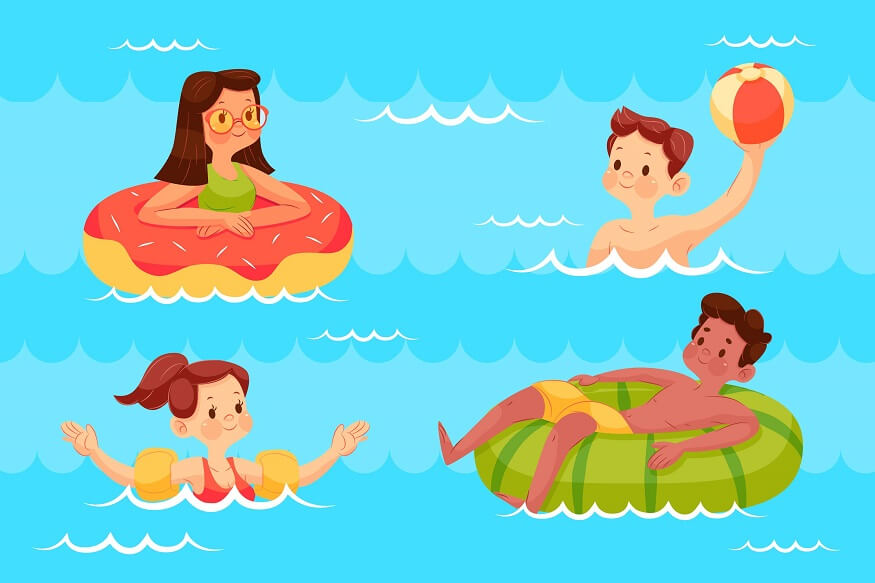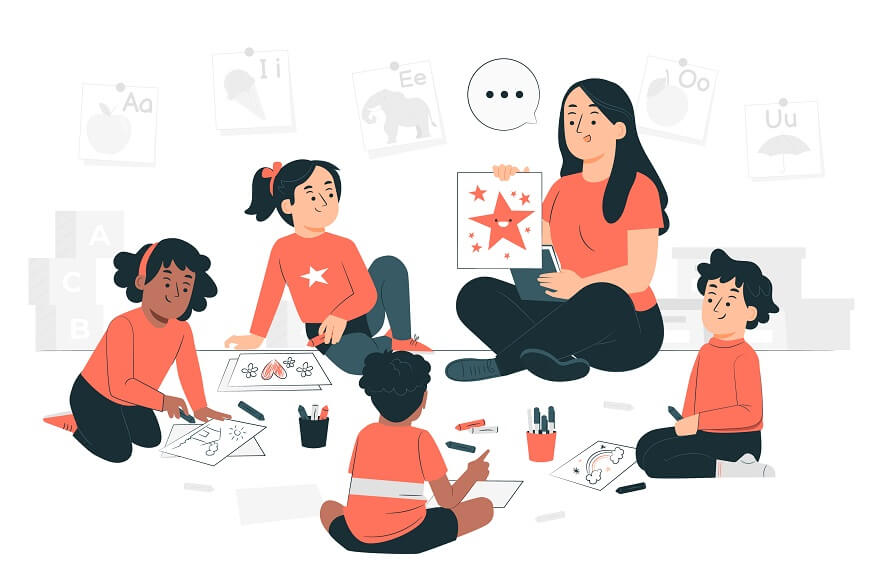Learning to swim is a fundamental skill for ensuring the safety of children near water bodies. Given the natural curiosity and fearlessness of young children, it is important to create awareness and equip them with practical measures for safety around water bodies.
Teaching kindergarten kids how to swim not only instils a sense of water safety but also enhances their physical fitness and stimulates brain development. Several steps can be undertaken to effectively teach swimming to kindergarten kids.
Also Read: Why swimming lessons should be enrolled for your child
1) Identifying the right age for swimming lessons
There is no fixed timeline for introducing kids to swimming lessons. Some children may pick up the skill soon, while others may benefit from starting lessons a bit later. Hence deciding when to introduce swimming lessons to kids is subjective and dependent on the child’s individual needs, preferences, and developmental milestones. it is important to consider the child’s emotional maturity, physical development, and comfort in the water.
Children as young as one-year-old can benefit from swimming lessons. Therefore, diving into formal swimming lessons with kindergarten kids usually around ages 4-6 seems appropriate.
2) Understanding child psychology for swimming lessons
To ensure a positive experience, it is crucial to understand the child’s psychology when teaching them to swim.
Each kindergarten kid is unique, with different learning styles, and preferences. Instructors must customise the swimming lessons to suit each child’s pace and developmental needs.
Praise and positive reinforcement are valuable tools for encouraging children to participate in these lessons. Children, particularly in kindergarten, are more likely to enthusiastically participate when they feel appreciated and confident.
Kindergarten kids grasp instructions, interpret visual cues, and follow sequences to execute swimming techniques. Instructors must use creative methods to help children visualise movements.
3) Creating A Safe Environment
It is crucial to introduce children to a safe and controlled environment free of dangerous elements such as deep water, strong currents, or large crowds.
A swimming pool specifically designed for children, with trained lifeguards monitoring progress and maintaining safety, is integral in teaching swimming techniques to kids effectively. Look out for child-friendly amenities such as step entrances, handrails, and safety floats.
Parents should be aware of the emergency preparedness of the pool facilities. Instructors and staff should be trained to respond swiftly to any unforeseen circumstances. Access to safety equipment, knowledge of CPR, ambulance facilities and evacuation procedures are vital components of a good emergency plan.
Parents should also be aware of the curriculum of the swimming lessons to ensure that their kids are engaging in age-appropriate activities which are safe as well as fun for the child.
4) Gradual progress with floating and submerging
It is important to familiarise children with water before making them swim. Primary steps should involve basic techniques such as safely entering and exiting the pool, kicking with kickboards, floating, and blowing bubbles underwater.
Once they master these skills, they should be gradually introduced to more complex swimming techniques such as leg kicking, arm movement, and submerging.
Acclimatising:
Initially, instructors and parents must focus on activities that help the child in acclimatizing to the water. Begin by encouraging them to splash, wade, and stand in the shallow kid’s pool. Use games and toys to create a positive association with water, building their confidence to navigate the water with ease.
Supported front and back floating:
Hold the child under their chest for a front float. Guide them into a horizontal position on their stomach.
Hold the child under their back for a back float and encourage them to spread their arms and legs.
Gently guide them to experience floating. This initial experience with buoyancy helps kids understand the water’s thrust and support and builds confidence in their own body’s ability to float.
Wall support:
As their confidence grows, have your kid hold onto the wall and practice floating on their back. Gradually release your support for them to experience floating independently.
Submerging:
Begin by making your child dip their chin and mouth into the water while holding onto the wall. Have them blow bubbles underwater. As they become comfortable, guide them to submerge their entire face briefly and then resurface. As they progress teach them to combine breath control with submerging their face in water.
5) Teaching breath control and rhythm
Breath control is essential while swimming. Train children to hold their breath while under the water and exhale when coming out. With practice, the rhythmic pattern of breathing will eventually become second nature to them.
Teach them to take a deep breath, hold it, and blow bubbles while submerged. This playful activity will familiarise them with water on their face and help them develop breath control and relaxation techniques.
6) Engaging Parents in the Process
Active parental involvement can have a significant impact on accelerating children’s swimming abilities. Encourage parents to participate in the process by making it interactive and fun.
Kindergarten kids look up to their parents for reassurance. Having them actively participate in the swimming lessons will help the child develop trust in their abilities with the confidence that parents are there to support and guide them.
Involving parents in the lessons will allow them to practice and reinforce techniques outside of class timings. This will help accelerate the learning process and boost the child’s confidence and self-esteem.
Parental involvement will also keep the channel of communication open between their child’s instructor and them. They can share observations, monitor progress and seek guidance on practising the techniques at home with the child.
Parents must maintain a swim log for their children. Use photos and videos to capture their progress over time. Compare the progress and appreciate your child for the progress they are making. This will not only help create memories but also act as a reinforcer for the child to keep getting better.
Also Read: Essential swimming pool rules that all parents must know and teach their child
Conclusion
Swimming lessons for kindergarten kids should be a blend of safety, physical exercise, efficient techniques, psychological understanding, and parental involvement. By following these steps, you nurture water-safe young individuals, contributing to their holistic development.
At EuroSchool we encourage extracurricular activities such as swimming at an early age ensuring that each child’s swimming journey is marked by positive experiences, skill development, and a positive attitude towards the water.










